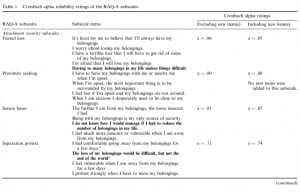
Hoarding is a form of Obsessive-Compulsive Disorder (OCD) it usually begins early in life, and can be seen in children. Children create extremely intense attachments to objects and have a tendency to personify things. Hoarding expands to become a modest problem in the 20’s and 30’s and becomes a severe problem in the 40’s and 50’s. Hoarders feel attached to their objects for several different reasons. These attachments take the form of attaching human- like qualities to lifeless possessions, feeling grief at the prospect of losing the objects, and deriving a sense of safety from being surrounded by objects. Other beliefs hoarders have are the necessity of saving things to keep memories and to appreciate the beauty of the objects. They also believe in not wasting objects or losing opportunities that are represented by them. When researching hoarders I came across a survey comparing people with OCD who are hoarders and people who are non-hoarders.

“Living spaces sufficiently cluttered so as to precluds for which those spaces were designed” ((Nedelisky, A, & Steele, M 2009, ‘Attachment to people and to objects in obsessive-compulsive disorder: an exploratory comparison of hoarders and non-hoarders’, Attachment & Human Development, 11, 4, pp. 365-383, Academic Search Complete, EBSCOhost, viewed 7 April 2013.))
This quote was taken from the survey/ article and I think it relates very closely to our performance, we are setting out to make our audience feel uncomfortable. Making it difficult for them to walk through a living room like you would in any other normal house. Giving them the feeling that they would actually experience in a home of a hoarder. They will walk into the room, and be in total shock at what they see, but try to not disturb and act as if nothing is it out of the ordinary. Something that most people would do when they are faced with something unexpected when they are guest in someone’s home, the experience we would like to give the audience is one they have never experienced or seen before. Our group do not want them to enter and us to perform and show them our room; we want them to take what they want from it whether that is disgust shock or fascination. The audience may understand the reasoning behind our performance, and why the room is full of pizza boxes and beer cans but they may not, but really it doesn’t matter we are there no one really knows why or what has occurred before they opened the door but that doesn’t matter. ((Etchells, T 2006, ‘Instructions for Forgetting’, TDR: The Drama Review, 50, 3, pp. 108-130, International Bibliography of Theatre & Dance with Full Text, EBSCOhost, viewed 7 April 2013)) ((Fugen, N, Steven, W, Jennifer, A, & Dean, M n.d., ‘Compulsive hoarders: How do they differ from individuals with obsessive compulsive disorder?’, Psychiatry Research, 200, pp. 35-40, ScienceDirect, EBSCOhost, viewed 7 April 2013.)) ((Fischer, S 2001, ‘A Room of Our Own: Rodinsky, Street Haunting and the Creative Mind’, Changing English: Studies In Reading & Culture, 8, 2, p. 119, Academic Search Complete, EBSCOhost, viewed 7 April 2013.))